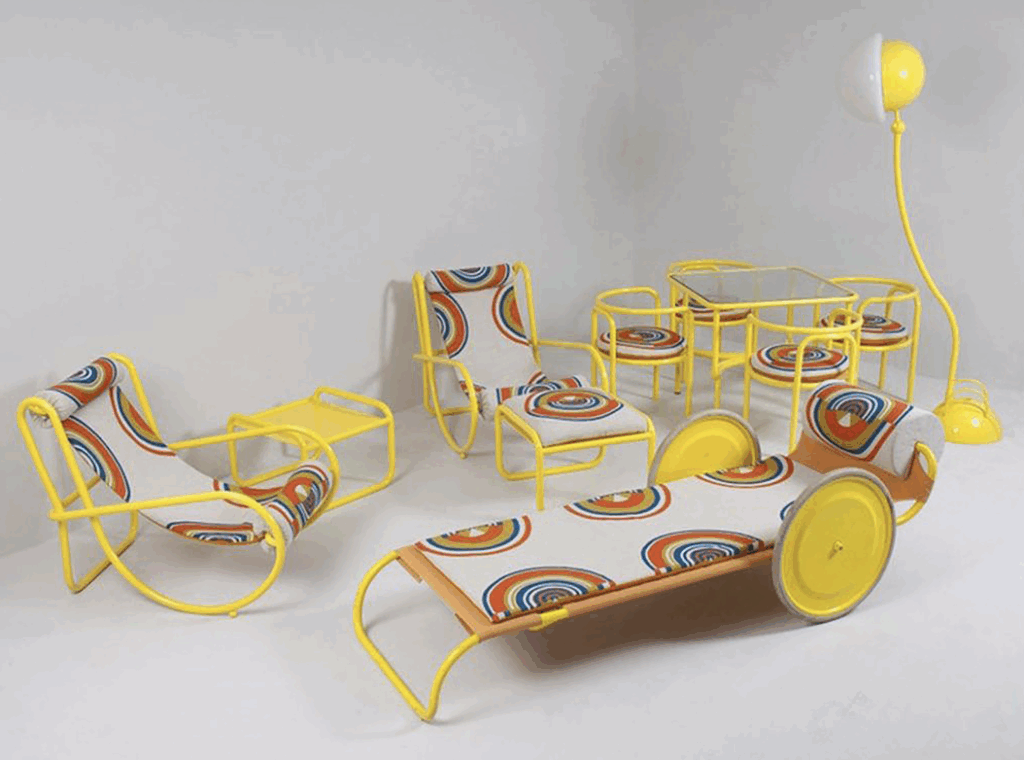Modernist poolside furniture represents a refined intersection of design, architecture, and leisure culture. Emerging from the early 20th-century modernist movement, it reflects a belief that beauty lies in simplicity, that form should follow function, and that outdoor spaces deserve the same aesthetic care as interiors. As modernist architecture blurred the boundaries between inside and outside, furniture around pools became more than mere accessories, they were extensions of the architectural idea itself.
The origins trace back to the 1920s and 1930s, when designers such as Eileen Gray, Le Corbusier, Ludwig Mies van der Rohe, and Marcel Breuer began reimagining how people interacted with space and objects. They replaced ornament with geometry, favoured industrial materials, and embraced mass production. These principles naturally extended to outdoor furniture as modernist villas, particularly in warm climates like Southern California and the south of France, began to include swimming pools as focal points of leisure and display.
By the mid-century, the poolside had become a quintessential symbol of modern living. Architects like Richard Neutra and John Lautner designed glass-walled houses that opened directly onto terraces and pools, seamlessly connecting modern interiors with the natural landscape. Furniture for these spaces had to mirror the architectural clarity and functional precision of the homes themselves. The result was a new visual language of clean lines, lightweight frames, and elegant minimalism.
Early modernist poolside pieces often used tubular steel, a material first popularised by Breuer in his iconic Wassily Chair. Its combination of strength, flexibility, and sleek appearance made it ideal for outdoor use. Over time, aluminium and stainless steel became common choices for frames because they resisted corrosion and weathering. Paired with mesh fabrics or slatted wood surfaces, these materials created a sense of lightness and transparency that complemented the sparkling geometry of the pool.

The 1950s and 1960s saw an explosion of innovation in outdoor furniture design, driven by postwar optimism and new materials. Designers such as Richard Schultz (for Knoll) and Russell Woodard redefined the aesthetics of poolside leisure. Schultz’s 1966 Collection, for example, originally called the Leisure Collection was composed at the request of Florence Knoll who mailed Schultz some rusted bolts illustrating the toll the corrosive Florida ocean air was having on her furniture asking if they could they do better. The collection remains a landmark in modern outdoor design with graceful, geometric, corrosion resistant powder-coated aluminium frames and breathable polyester mesh.
What distinguished modernist poolside furniture from earlier garden styles was its architectural coherence. Victorian and early 20th-century outdoor furnishings were ornate, mimicking indoor styles with wrought-iron curls and heavy wood carvings. Modernism replaced that clutter with honesty of structure. A chaise was not disguised; its frame was celebrated. Materials were not painted to imitate others; steel looked like steel, and teak looked like teak. The modernist belief in truth to materials gave poolside environments a visual integrity that continues to define luxury minimalism today.
Comfort, too, was reimagined. Rather than overstuffed cushions, designers pursued ergonomic shaping—the curve of a sling seat following the human form, or the subtle tilt of a recliner responding to the body’s natural posture. In warm climates, this approach produced furniture that felt as breezy and effortless as the architecture around it. The goal was always to create a tranquil, almost meditative experience: the quiet geometry of a chair mirroring the stillness of the pool’s surface.
Contemporary brands and manufacturers continue to sell and reissue mid-century designs. The clean silhouettes of classic modernism still dominate catalogues and architectural renderings because they embody a timelessness and ability to look both retro and futuristic at once. In 2022 Italian company Exteta reissued Gae Aulenti’s 1960s ‘Locus Solus’ collection. Originally designed for Centro Studi Poltronova in 1964, the collection featured sun lounges, tables and chairs in bold colours, tubular steel and matching prints, and was part of the set for the 1969 movie La Piscine, starring Alain Delon and Jane Birkin.
Ultimately, modernist poolside furniture is more than a style; it is a philosophy of living. It celebrates restraint over excess, clarity over confusion, and the pleasure of being in tune with one’s surroundings. Whether it is a simple aluminium chaise, a sculptural fiberglass chair, or a teak table that weathers gracefully with time, each piece reflects the enduring modernist dream to create beauty through purpose and simplicity. In the reflection of a calm pool, the purity of that vision remains as compelling today as it was nearly a century ago.
By Rebecca Stormont, Modern Design Specialist
Top Image: Richard Schultz 1966 Collection for Knoll / Image Courtesy of Knoll, Inc.
December 2025
